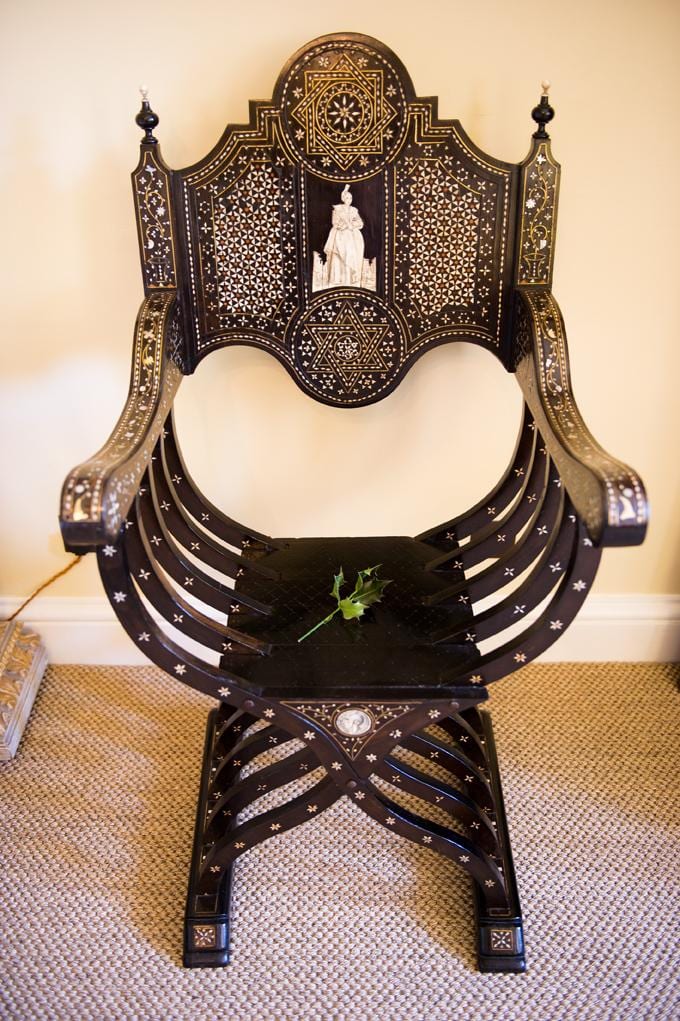What do we currently know about the chair?
The chair is one of a pair, in the collections of Kiplin Hall in Scorton, near Richmond in North Yorkshire. The chairs are listed in the 1882 inventory, which is the earliest surviving inventory for Kiplin Hall. They are listed as being situated in the Hall (which is now the Tea Room) and were described as ‘2 very fine Indian arm chairs, richly inlaid with ivory, pearl and brass (1 knob damaged) More inlaid work. Slightly damaged in places’. The 1992 inventory describes them as: ‘one of two mid 18th century Goanese ebony and intarsia Savonarola chairs, the backs inlaid with diaperwork and figure of a 17th century lady and with slatted ogee supports and sledge feet’.
Kiplin Hall was originally built by George Calvert, Secretary of State to King James I in the early 1620s. Calvert followed the latest fashions in architecture, using red brick rather than Yorkshire stone to construct a tall, compact, symmetrical, country house. Over a century later, in 1722, Christopher Crowe bought Kiplin Hall from his stepson Charles Calvert, 5th Lord Baltimore. Crowe added a service wing to the north of the Hall, put in a fine central staircase, and installed fashionable Georgian fireplaces and plasterwork in the rooms. In 1820, Lord and Lady Tyrconnel added a wing to the south containing a Gothic-style drawing room. When Admiral Walter Talbot inherited Kiplin from his cousin, he changed this room into the Jacobean-style library of today and made improvements to the service wing and grounds. The crest above the front door is that of the Carpenter family, with their motto ‘per acuta belli’ – by the strategems of war, probably a reference to their naval background. In the 1970s, some of the service wing was demolished and the north tower restored. More information about Kiplin Hall can be found on their website.
What do we want to know about the chair?
Are there similar chairs in any other collection?
Is it possible to date the chairs at all? Are they nineteenth century?
Is it likely that the chairs were made in Goa?
What materials are the chairs made from?
What do you know about the chair or other furniture pieces like it?
If you have any information (or speculations!) on the chair and furniture pieces like it please contact Kate at eicathome@ucl.ac.uk.
If you have any questions you would like to add about the chair do email too!



Comments are closed, but trackbacks and pingbacks are open.